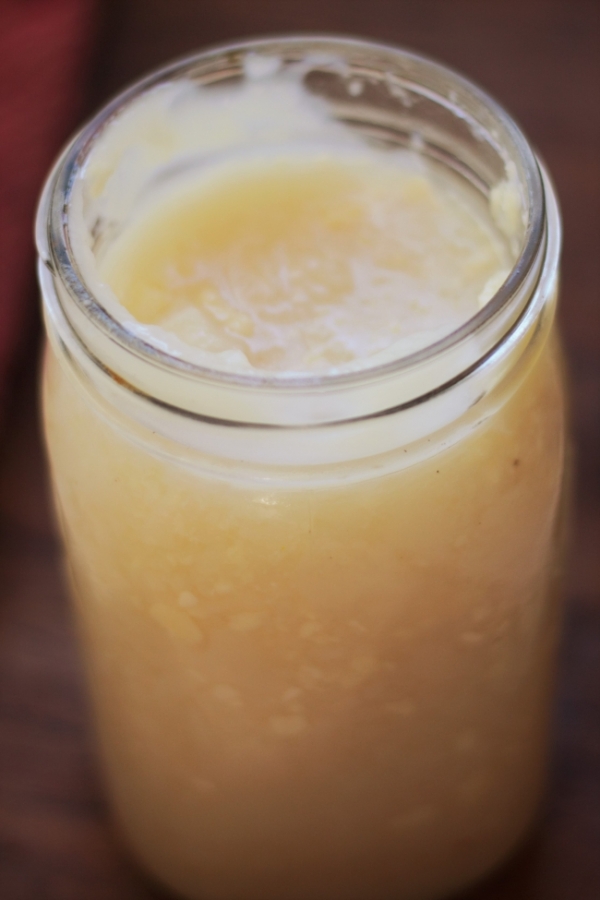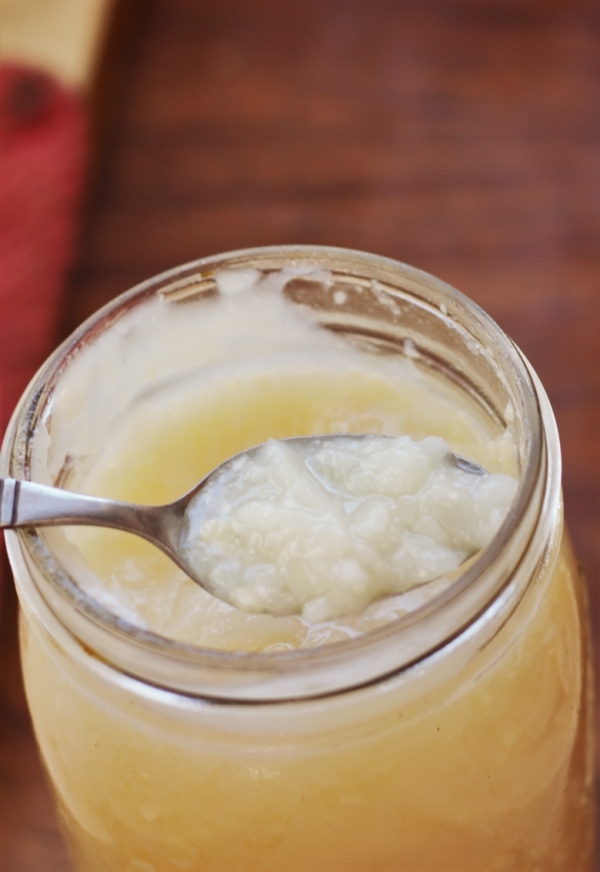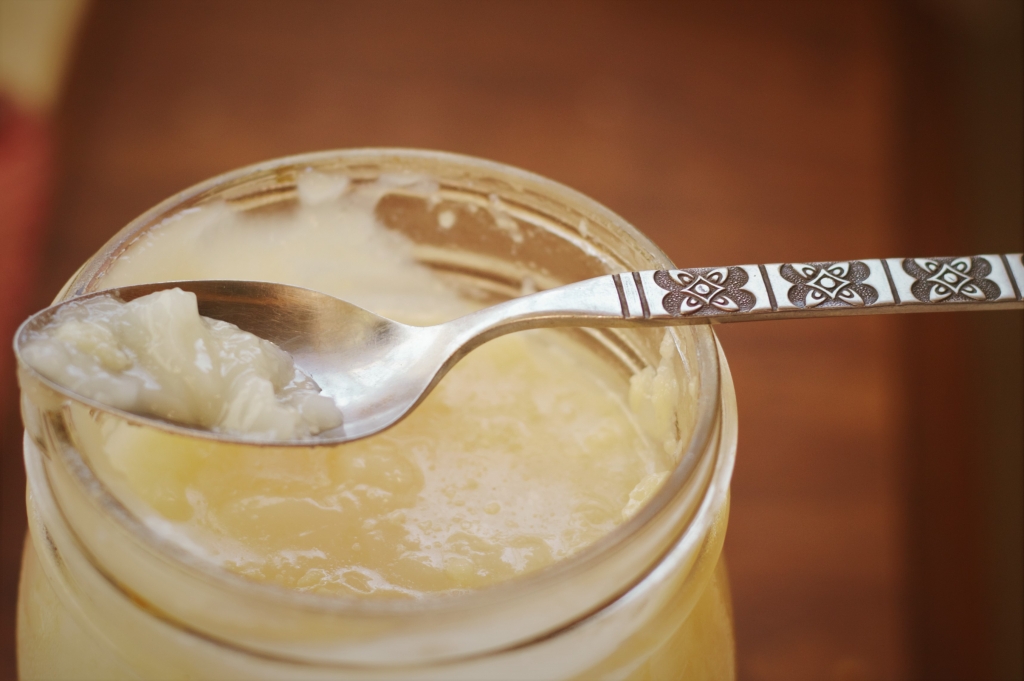A New (old) Way to Make Better Bone Broth

I have done all the bone broth tricks – long simmering, apple cider vinegar, crock pot, stock pot, beef bones, chicken bones, vegetables, no vegetables. This one’s new, to me at least. I can tell you up front that it involves an overnight sit and gave us some very gelatinous broth.
I was perusing an older cookbook called The Art of Mexican Cooking by Diana Kennedy recently. I really enjoy these types of cookbooks because, while they’re not full of the colorful magazine photos we all love, they have lots of little tidbits from home cooks that you just can’t get anywhere else.
In one recipe for a chicken soup, she cited the following method for making chicken broth:
- Simmer the chicken carcass for 4-6 hours, partially uncovered.
- Cover the pot and let sit overnight in a cool location. She specifically mentions that this step helps to draw the flavor, minerals, and gelatin from the bones.
- In the morning, scrape off the fat and bring the broth to a boil.
- Remove from the heat and strain.

This process appealed to me because, not only is it something I’d never tried but it also fits in well with my normal rooster broth routine. Often when we are butchering chickens, I don’t get them into the pot until well after the lunch rush. With this method I can get in my 4-6 hours of simmering before evening kitchen chores like straining goat milk and feeding ferments. The next day the broth is ready to go, no refrigeration required.
I used this method last week when making chicken broth and ended up with jars that, once chilled, contained some of the most gelatinous of homemade broths. After making a few tweaks of my own, I thought I’d share my process.
My New Bone Broth Procedure
- Cover chicken carcass with water by two inches. Add 1-2 teaspoons apple cider vinegar.
- Bring broth to a simmer and lower heat as low as it will go while maintaining a slight simmer. Leave uncovered or partially covered and simmer 4-6 hours.
- Remove from heat, cover pot, and let sit on the counter overnight.
- In the morning, skim off fat, if desired. I only do this when the animal is a very fatty one.
- Bring the broth to a boil again. Remove from heat, allow to cool enough to handle, and strain into jars.

It was delicious when simmered alongside the okra we have been harvesting, plenty of spices, and grass-fed beef. (Gumbo, where have you been all my life?)
And now this method is the one I will be using for bone broth going forward. There are some great articles with a vast list detailing the healing constituents of bone broth. Anecdotally, we always feel better when we eat it and, in an agrarian sense, I love how it’s just common sense nourishment.


How much water do you put in the pot? Just enough to cover the carcass?
Just to be clear, you bring it to boil in the morning & then take it off the stove?
Linda – Yes, ma’am. I added a more specific list of instructions from my own procedure that you will now see above.
Thank you, Shannon, for sharing this method of making bone broth. I will have to give it a try. My hubby doesn’t care for the broth smell permeating the house when I make broth in the crockpot, simmering 24 plus hours. (He works from home.) Actually, it not my favorite either, especially when I add chicken feet.
When you say let it set in a cool place, does that mean a refrigerator? I live in Iowa and we have hot summer days and nights. Last night the temp got down to 47 degrees so I imagine a broth would be fine sitting on a counter at that temp since we had our windows open. I would appreciate any suggestions or clarification you would give on this topic. Just want to be food safe. Thank you for all you share. As a country gal I enjoy your posts very much.
Hi Cory – I leave it out on the counter overnight with our current overnight temps in the upper 60s. If there is any fat in the pot it should help create an oxygen barrier, keeping the broth beneath it from bacterial harm. You’re also boiling it in the morning which would kill off anything undesirable.
To clarify I added a list of directions based on my own procedure. Thanks!
Would this work with all bones or just chicken? I’ve been making a multi bone broth ( beef, chicken, lamb and pork if I have them ) for the last few years as the depth of flavour is amazing!
Thank You! This is new to me too. (((HUG)))
Do you add any vege or herbs to the broth? I make broth for my 86 yo mom (she drinks it cold), but always add the vege. Like the overnight technique for sure.
Lisa – I usually don’t, just to keep the flavor neutral because I never really know what I’ll do with it. That said, it is certainly acceptable to add neutral-flavored veg and herbs like carrot, onion, and parsley which are things that might end up in just about any broth application. 🙂
Just to clarify is there a difference between what you call bone broth and homemade stock whether it be beef or chicken?
Elizabeth – I believe stock generally involves meat and bones or just meat. I’m not 100% sure on that, though, as I almost exclusively make broth.
Thank you for this! I’m a silent reader but this info is game changing! My family of 4 lives in a one bedroom apartment on the third floor in Los Angeles. Boiling a pot of broth for 24 hrs is akin to torture because of the heat it generates. Now bone broth is in my reach! Thank you!
Shannon, What would be the best way to preserve broth? We just butchered 9 roosters and I was thinking of canning the broth. Canning isn’t really sustainable though. Maybe there really isn’t a sustainable way to preserve it besides only butchering a few chickens when needed? 9 roosters at once is going to make more broth than we can use immediately.